Danes aiming for 35 piglets per sow per year
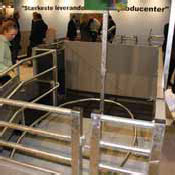
Denmark needs to specialise to stay competitive in the long run. The country therefore should specialise in what it is good at. Martin Andersson, pig expert at the Danish Agriculture and Food Council, explained the Danish outlooks at Agromek-Livestock, held 24-28 November 2009, in Herning, Denmark.
By Stuart Lumb
The Danish pig industry is a major contributor to Denmark’s export earnings but this fact seems to have been lost on most Danes. Danes should be thanking their pig producers but instead these ‘townies’ throw brickbats at them, complaining about the smell of pigs and slurry and how this reduces the value of their rural homes.
On their part, the Danish pig farming organisations seem to have lost touch with their urban neighbours and need to go on a charm offensive. In a recent industry update during Agromek-Livestock, Martin Andersson, head of the Danish pig research centre Danish Pig Production, now part of the Danish Agriculture and Food Council, was keen to emphasise that the Danish pig industry was amongst the top 12 Danish industries praised for their leadership qualities.
Recession
Like many countries, the recession has impacted on Denmark and its pig industry, which for a country that is around 400% self-sufficient is bad news. However, Andersson highlighted the structure of the industry as being its saving grace. Average output stands at 26.6 pigs weaned/ sow/ year with the top 25% achieving 29.3 pigs/sow/year. Thirty five pigs a sow is considered an approachable target within the next few years. Currently 25% to 30% of the sows are in herds with 1,000+ sows with 60% being in herds with 500+ sows. New units will have 2,000 sows, compared to 600 sows five years ago. “The industry is changing rapidly,” Andersson said.
When these big units will be built however is a very different matter as the banks are not lending, so very little capital is available for investment. In addition, Andersson said, “Land, once seen as a money maker, is now a money taker… Although the industry must start reinvesting again in 2010 and 2011 to maintain productivity and profitability.”
Because of environmental problems, like the need for land for manure disposal, many pig producers have increased sow numbers and just produce weaners – in 2002 1.5 million weaner pigs were exported, now this stands at 7 million.
Also, a third of pig farms can’t expand because they are situated in villages, which have expanded around the farms. Slurry odours can pretty well be eliminated by using the slurry to make biogas. Germany has a huge biogas industry with the government subsidising the price of the electricity, but this is not so in Denmark and so the number of installations are relatively few (See also the article: Biogas gains ground at Danish and Austrian farms).
Politics
There is now a possibility that the link between owning land and producing finishing pigs will be rescinded shortly, but this is in the hands of the politicians. As well as weaners, large numbers of slaughter pigs are exported to Germany due to the higher prices paid there and this along with Germany’s own production means that Germany is now a bigger exporter of pig meat than Denmark, no doubt much to the annoyance of the Danes.
The Danes have been steadily racking up the status of their breeding pigs, independent evaluation tests now show DanBred can match and in many cases exceed the performance of other international breeding companies. Also the Germans are now happy to accept the use of Duroc as a terminal sire, compared to the traditional Piétrain and exports of breeding gilts have doubled in the last three years, with Russia being a major importer. Andersson reckons that in ten years time there will only be a handful of breeding companies, with DanBred being one of them. Genomic selection is helping DanBred to rapidly improve the performance of their stock compared to traditional breed improvement methods.
In 2009, an improvement of 1.3 piglets per sow per year was realised, along with an improvement of 0.06 units of feed conversion rate (FCR) plus 25 grammes average daily gain (liveweight). By 2020, the top 25% of producers will be weaning over 15 piglets per litter and 35 piglets per sow per year. Daily gain from 30-110 kg will be 1,050 grammes and FCR will be 2.5:1.
Welfare
Animal welfare is a big issue in Denmark and in fact Danish legislation exceeds the EU legislation in nine areas, which all burden the producer with extra costs. The Danes are looking at loose farrowing in great detail as it’s politically a very hot topic. Farmers are paid to try out prototype systems and in fact one system gained a three-star award at Agromek (See Box: Innovations at Agromek-Livestock), but this might have been politically motivated as the general opinion is that the industry is still three to four years away from having a loose farrowing system which will produce the same piglet liveability as current restrained farrowing systems.
Also safety issues are involved as farrowing sows can be very aggressive. One system currently in use allows one side of the farrowing crate to be opened after four to five days, once the piglets are agile enough not to be laid on. Welfarists argue this is not enough, claiming some farmers would deliberately not open the crate. Another new research topic is that of assessing straw requirements in pens plus the physical form – chopped, unchopped etc.
After two years of losing money economists are forecasting that the industry will be back in profit in 2010 and 2011, and undoubtedly producers will be hoping that these forecasts turn out to be accurate.
| Innovations at Agromek-Livestock, November 2009 Sow farrowing systems The emphasis on environment and animal welfare could be seen, as ongoing discussions on providing more space for sows in farrowing crates came back in this experimental farrowing crate design from Danish equipment manufacturer Sdr Vissing. This design allows sows to lie down and move about without crushing the piglets. In this 1.90 m x 3.20 m design, ideally weaning happens by taking out the sows and leaving the weaners in for another while. * A similar philosophy could be seen in an Egebjerg enlarged farrowing crate. This prototype allows farmers to lift the crate once the piglets are old and quick enough to prevent overlying. Intelligent canopy Low-energy fan Grinding system |
Join 18,000+ subscribers
Subscribe to our newsletter to stay updated about all the need-to-know content in the pigsector, three times a week. Beheer
Beheer
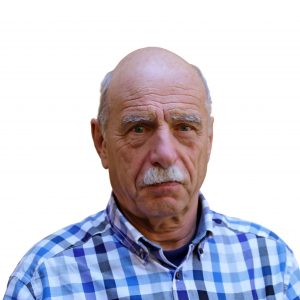
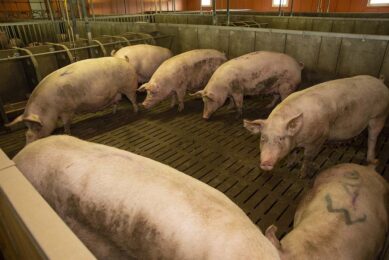
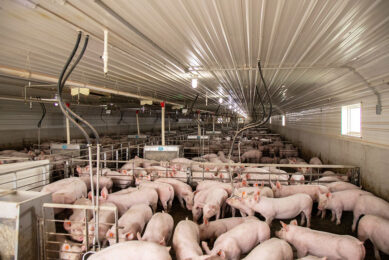
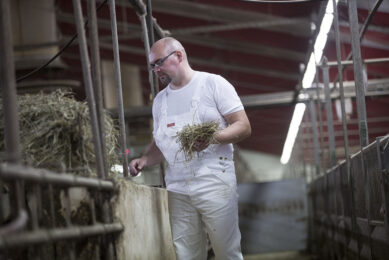
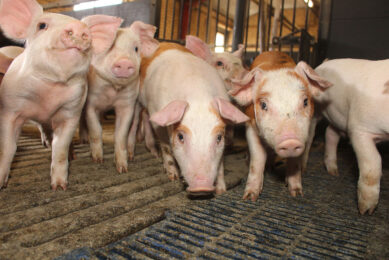





 WP Admin
WP Admin  Bewerk bericht
Bewerk bericht